
Sir Walter Scott, 1st Baronet, was a Scottish novelist, poet and historian. Many of his works remain classics of European and Scottish literature, notably the novels Ivanhoe (1819), Rob Roy (1817), Waverley (1814), Old Mortality (1816), The Heart of Mid-Lothian (1818), and The Bride of Lammermoor (1819), along with the narrative poems Marmion (1808) and The Lady of the Lake (1810). He had a major impact on European and American literature.
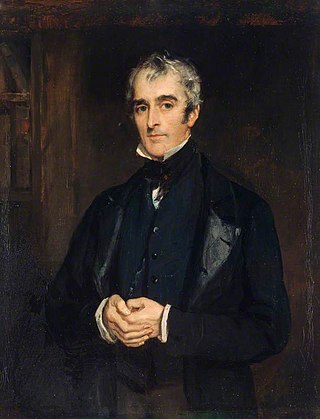
John Gibson Lockhart was a Scottish writer and editor. He is best known as the author of the seminal, and much-admired, seven-volume biography of his father-in-law Sir Walter Scott: Memoirs of the Life of Sir Walter Scott, Bart. He produced four novels in the early 1820s including Adam Blair and Reginald Dalton.

Archibald David Constable was a Scottish publisher, bookseller and stationer.
This article contains information about the literary events and publications of 1821.
William Laidlaw (1780–1845) was a Scottish poet. The son of a border farmer, he became steward and amanuensis to Walter Scott, and was the author of a well-known ballad, Lucy's Flittin.

James Ballantyne was a Scottish solicitor, editor and publisher who worked for his friend Sir Walter Scott. His brother John Ballantyne (1774–1821) was also with the publishing firm, which is noted for the publication of the Novelist's Library (1820), and many works edited or written by Scott.

The Waverley Novels are a long series of novels by Sir Walter Scott (1771–1832). For nearly a century, they were among the most popular and widely read novels in Europe.

Tillietudlem is a fictional castle in Walter Scott's 1816 novel Old Mortality, and a modern settlement in South Lanarkshire, Scotland.
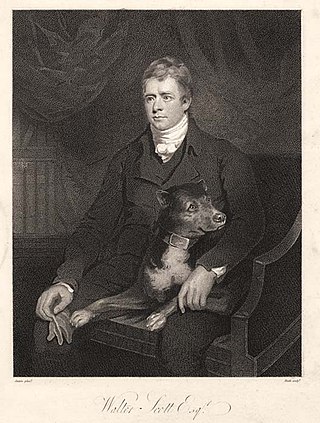
Minstrelsy of the Scottish Border is an anthology of Border ballads, together with some from north-east Scotland and a few modern literary ballads, edited by Walter Scott. It was first published by Archibald Constable in Edinburgh in 1802, but was expanded in several later editions, reaching its final state in 1830, two years before Scott's death. It includes many of the most famous Scottish ballads, such as "Sir Patrick Spens", "The Young Tamlane", "The Twa Corbies", "The Douglas Tragedy", "Clerk Saunders", "Kempion", "The Wife of Usher's Well", "The Cruel Sister", "The Dæmon Lover", and "Thomas the Rhymer". Scott enlisted the help of several collaborators, notably John Leyden, and found his ballads both by field research of his own and by consulting the manuscript collections of others. Controversially, in the editing of his texts he preferred literary quality over scholarly rigour, but Minstrelsy of the Scottish Border nevertheless attracted high praise from the first. It was influential both in Britain and on the Continent, and helped to decide the course of Scott's later career as a poet and novelist. In recent years it has been called "the most exciting collection of ballads ever to appear".

Robert Cadell was a bookseller and publisher closely associated with Sir Walter Scott.

The Canongate Kirkyard stands around Canongate Kirk on the Royal Mile in Edinburgh, Scotland. The churchyard was used for burials from the late 1680s until the mid-20th century.
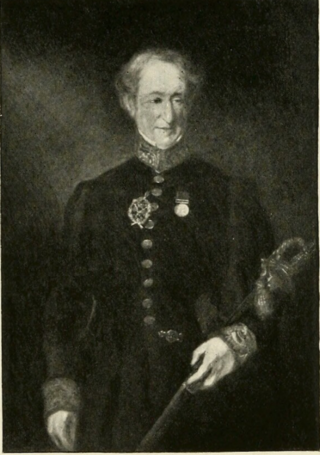
Sir Adam Ferguson (1770–1854) was deputy keeper of the regalia in Scotland.
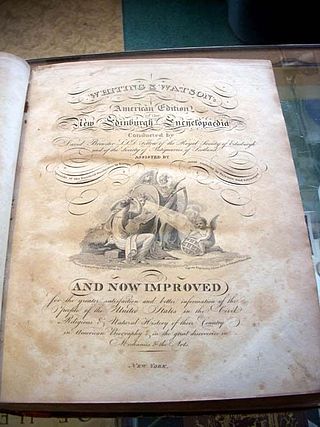
The Edinburgh Encyclopædia is an encyclopaedia in 18 volumes, printed and published by William Blackwood and edited by David Brewster between 1808 and 1830. In competition with the Edinburgh-published Encyclopædia Britannica, the Edinburgh Encyclopædia is generally considered to be strongest on scientific topics, where many of the articles were written by the editor.
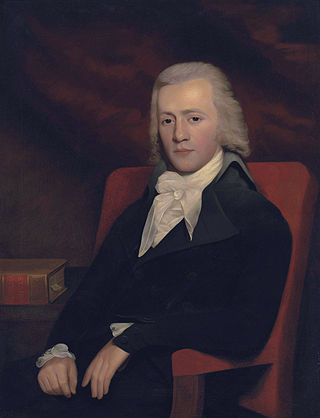
William Erskine, Lord Kinneder (1768–1822), was a friend and confidant of Sir Walter Scott, and a scholar and songwriter.

The Journal of Sir Walter Scott is a diary which the novelist and poet Walter Scott kept between 1825 and 1832. It records the financial disaster which overtook him at the beginning of 1826, and the efforts he made over the next seven years to pay off his debts by writing bestselling books. Since its first complete publication in 1890 it has attracted high praise, being considered by many critics one of the finest diaries in the language.

The Writers’ Museum, housed in Lady Stair's House at the Lawnmarket on the Royal Mile in Edinburgh, presents the lives of three of the foremost Scottish writers: Robert Burns, Walter Scott and Robert Louis Stevenson. Run by the City of Edinburgh Council, the collection includes portraits, works and personal objects. Beside the museum lies the Makars' Court, the country's emerging national literary monument.
Events from the year 1821 in Scotland.
The Field of Waterloo is a poem by Walter Scott, written and published in 1815. It is in iambic tetrameters and trimeters with a few Spenserian stanzas at the end. The work moves from a depiction of the site of the battle, with farm life renewing in the autumn, to an account of the conflict, highlighting Napoleon and Wellington, and a roll-call of prominent British casualties.
The letters of Sir Walter Scott, the novelist and poet, range in date from September 1788, when he was aged 17, to June 1832, a few weeks before his death. About 7000 letters from Scott are known, and about 6500 letters addressed to him. The major repository of both is the National Library of Scotland. H. J. C. Grierson's The Letters of Sir Walter Scott (1932–1937), though it includes only about 3500, remains the standard edition.
Illustrations of Northern Antiquities (1814), or to give its full title Illustrations of Northern Antiquities, from the Earlier Teutonic and Scandinavian Romances; Being an Abstract of the Book of Heroes, and Nibelungen Lay; with Translations of Metrical Tales, from the Old German, Danish, Swedish, and Icelandic Languages; with Notes and Dissertations, was a pioneering work of comparative literature which provided translations and abstracts of various works written in medieval Germany and Scandinavia. Its three authors were Henry Weber, who précised the Nibelungenlied and Heldenbuch; Robert Jamieson, who translated Danish and other ballads, stressing their close connection with Scottish ballads; and Walter Scott, who provided an abstract of Eyrbyggja saga. It significantly extended British readers' access to early Germanic literature.













